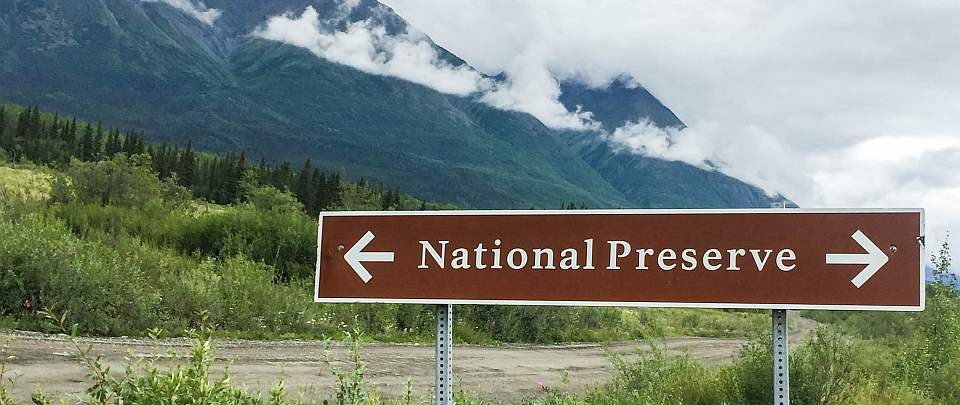
The numerous designations within the National Park System can be confusing. The names are created in the Congressional legislation authorizing the sites or by the president, who proclaims "national monuments" under the Antiquities Act of 1906. Many names are descriptive—lakeshores, seashores, battlefields—but others cannot be neatly categorized because of the diversity of resources within them. In 1970, Congress elaborated on the 1916 National Park Service Organic Act, saying all units of the system have equal legal standing in a national system.
Many of Alaska's parklands have more than one designation, such as Denali National Park & Preserve, and some areas within parks are designated as Wilderness areas as well. For most visitors, these designations won't affect their experience of the parks, but they do influence regulations for certain activities, such as sport hunting and snowmobiling. For details on designations and regulations within a park unit, visit the park website. Read on to learn about the types of designations that exist in Alaska.
For a full list of all the designations of the National Park Service, read Discover National Park System Designations.
National Park
These are generally large natural places having a wide variety of attributes, at times including significant historic assets. Hunting, mining and consumptive activities are not authorized. In Alaska, many parklands contain both national park and national preserve areas.
National Monument
The Antiquities Act of 1906 authorized the President to declare by public proclamation landmarks, structures, and other objects of historic or scientific interest situated on lands owned or controlled by the government to be national monuments. There are two national monuments in Alaska, Cape Krusenstern National Monument and Aniakchak National Monument & Preserve.
National Preserve
National preserves are areas having characteristics associated with national parks, but in which Congress has permitted continued public hunting, trapping, oil/gas exploration and extraction. Many existing national preserves, without sport hunting, would qualify for national park designation. In Alaska, many parklands contain both national park and national preserve areas.
National Historic Site
Usually, a national historic site contains a single historical feature that was directly associated with its subject. Derived from the Historic Sites Act of 1935, a number of historic sites were established by secretaries of the Interior, but most have been authorized by acts of Congress.
National Historical Park
This designation generally applies to historic parks that extend beyond single properties or buildings. Alaska has two national historic parks, Sitka National Historic Park and Klondike Gold Rush National Historic Park, and one national historic area, Aleutian World War II National Historic Area.
National River
There are several variations to this category: national river and recreation area, national scenic river, wild river, etc. The first was authorized in 1964 and others were established following passage of the Wild and Scenic Rivers Act of 1968. There are 13 Wild and Scenic rivers managed by the National Park Service in Alaska.
National Trail
The national trail designation includes national scenic trails, national historic trails, and national recreation trails. While national scenic trails and national historic trails may only be designated by an act of Congress, national recreation trails (including national water trails) may be designated by the Secretary of the Interior or the Secretary of Agriculture (for trails on or in cooperation with National Forest Service lands). The designations recognize exemplary trails of local and regional significance. Alaska has 19 national recreation trails, totalling 530 miles, including about 40 miles in the Kenai Mountains-Turnagain Arm National Heritage Area. The Iditarod National Historic Trail is Alaska's only national historic trail. The 2,300 mile trail crosses lands owned by several Native corporations, municipal governments and the State of Alaska as well as federal lands managed by the Bureau of Land Management, the U.S. Forest Service, the U.S. Fish and Wildlife Service, and the Department of Defense. it is managed by the Bureau of Land Management.
Affiliated Areas
In an Act of August 18, 1970, the National Park System was defined in law as, "any area of land and water now or hereafter administered by the Secretary of the Interior through the National Park Service for park, monument, historic, parkway, recreational or other purposes."The Affiliated Areas comprise a variety of locations in the United States and Canada that preserve significant properties outside the National Park System. Some of these have been recognized by Acts of Congress, others have been designated national historic sites by the Secretary of the Interior under authority of the Historic Sites Act of 1935. All draw on technical or financial aid from the National Park Service. In Alaska, the Kenai Mountains-Turnagain Arm National Heritage Area is an affiliated area of the National Park Service. Learn more about national heritage areas and what they are.
Other Designations
Some units of the National Park System bear unique titles or combinations of titles, like the White House and Prince William Forest Park.
Last updated: August 8, 2017
